The Weird And Dangerous Beauty Standards Of Renaissance Italy
The Italian Renaissance is a period known for developing a culture that spread across Europe and marked the transition from the Middle Ages to modernity.
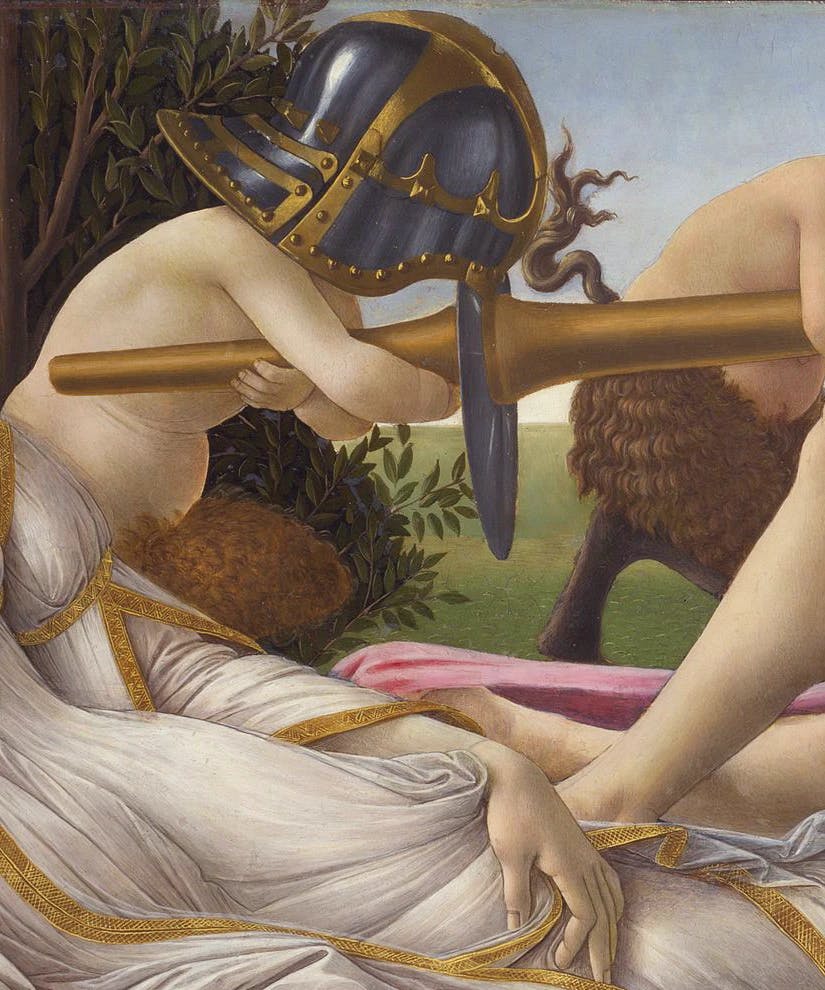
Usually considered to last from the 14th to the 17th century, Renaissance Italy was an extremely Catholic, patriarchal society; therefore, women were meant to embody virtue and were often separated from men in public and at home. A woman’s value was linked to her relationship with men, whether God, her father, or her husband.
One interesting and very important detail of this time is that the quality of both a wife’s behavior and looks were thought to reflect her husband’s status. Therefore, women during this period did everything they possibly could to make themselves look healthy and beautiful, as it wasn't just her reputation at stake but her husband's too.
So, it comes as no surprise that this period also had its fair share of weird and (incredibly) dangerous beauty hacks. From blonde, braided hair and high hairlines to putting poison drops in your eyes and leeches on your ears, here are the weirdest and most popular beauty standards in Renaissance Italy.
Pale Skin and Rosy Cheeks Were the Beauty Ideal
Beauty in Renaissance Italy entailed exclusively pale skin and rosy cheeks. And, as expected, Renaissance ladies went to extreme lengths to achieve this since, back then, they didn't have dozens of powders or blushers to choose from the way we do today.
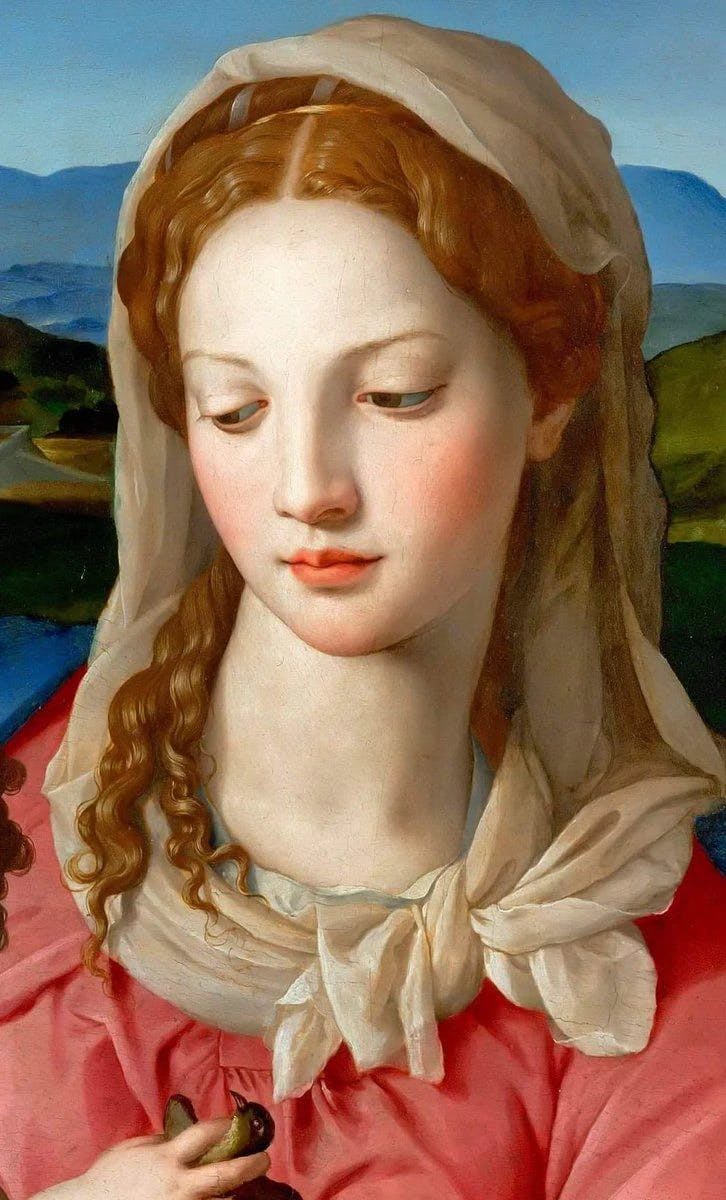
Detail from Holy Family with St. Anne and the infant St. John the Baptist by Agnolo Bronzino, 1550. Via Wikimedia Commons
When it came to social events, it was common for women to put leeches on their ears or cheeks to drain the blood from their faces. This gave them a look that was so en vogue for the evening.
However, as you may assume, this beauty hack didn't come without its risks, and if it happened to be overused, women would end up suffering from skin lesions on the face and head, which they would then cover with fabric pieces cut into shapes such as stars or moons.
Other, less hazardous beauty hacks women during the Renaissance period used were egg whites applied to the skin, sometimes along with vinegar, to get a paler look.
For makeup, wealthier women often used expensive saffron to highlight their cheekbones, and in Tuscany, they seem to have worn a bright (and fairly expensive) pink rouge, while other less affluent ladies wore a less expensive earthy red.
You may be wondering, why drain the blood from your face in the first place and then apply makeup to simulate rosy cheeks later? However, the specific beauty ideal during this time was extremely pale skin and rosy cheeks, which is different than natural blushing and flushing, which usually shows over a larger area of the face.
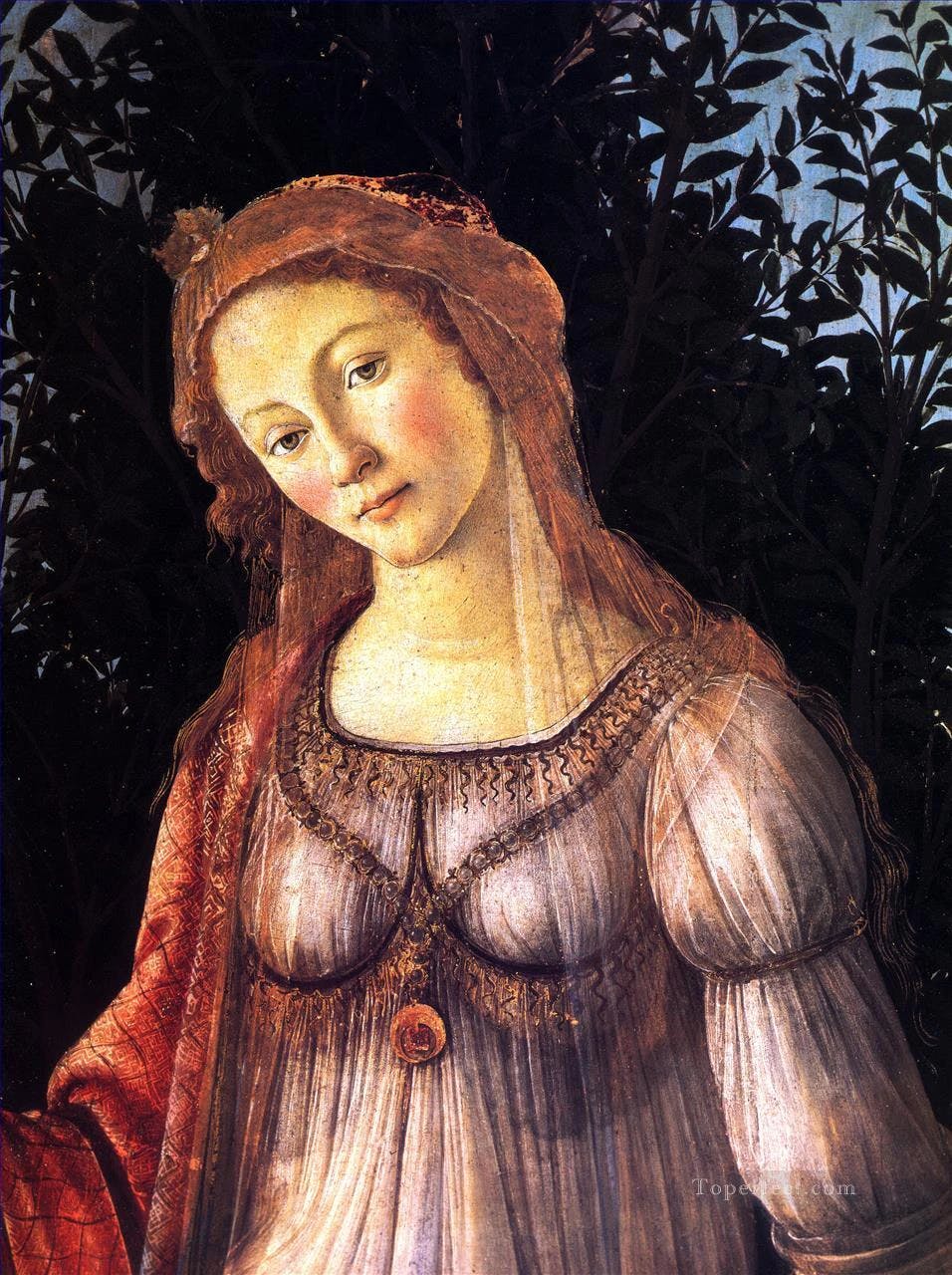
Detail from Primavera by Sandro Botticelli, circa 1480. Via Wikimedia Commons
Eye makeup was also common among affluent women at this time, and they would use antimony or soot to darken their short but dense eyelashes. Additionally, they would sometimes line their eyelids with a black liquid and shadowed their lids with brown, gray, blue-green, or violet colors.
Eyebrows needed to remain light and airy, so they were often tweezed or even cut to ensure they were not overly prominent.
As for the lips, Renaissance ladies commonly used honey and vermilion, which could either be left natural or tinted to a full, highly defined and luscious red color.
Strawberry Blonde Hair
Blondes were the epitome of beauty during this era and, therefore, highly sought after. This beauty standard forced women with darker locks to come up with a mechanism to lighten their hair.
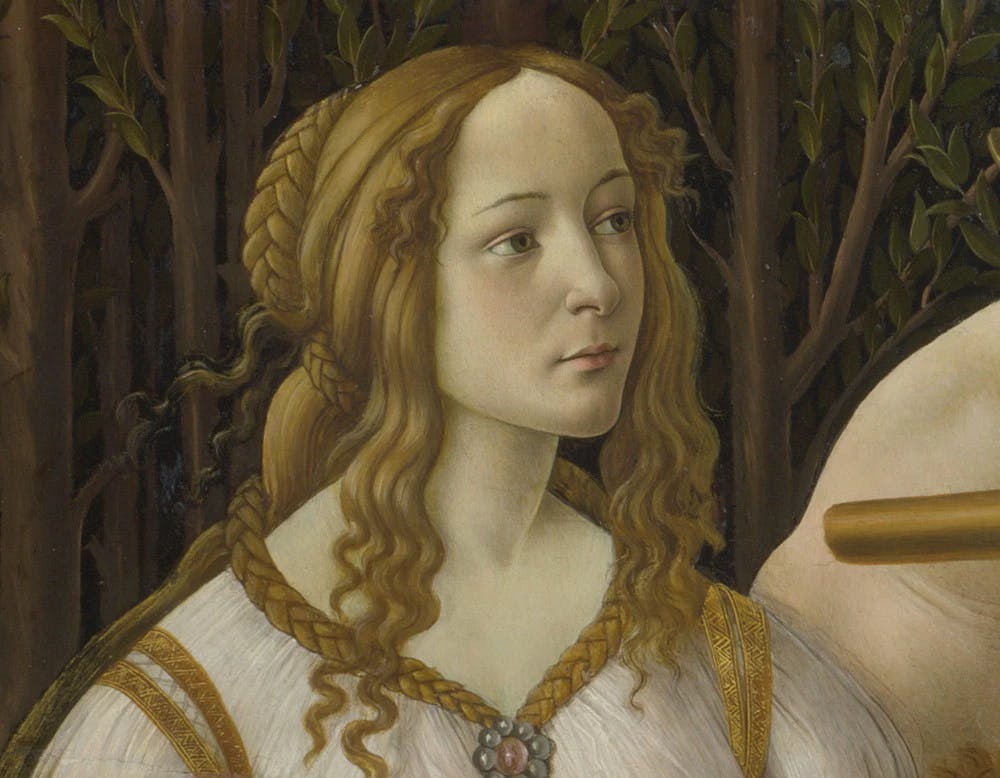
Detail of ‘Venus and Mars’ by Sandro Botticelli, 1485. Via Wikimedia Commons
Saffron and onion skin dyes, as well as elements like alum, sulfur, and soda, were commonly used for this purpose. However, most of these products didn’t work on their own. They required long hours in the hot sun, which served as the heating mechanism that activated the bleach.
The process was tricky because women also wanted to keep their skin pale and untouched by the sun. Therefore, they had to sit outside for hours in heavy clothing to protect their skin and hats to protect their faces. The hats had the crowns cut out of them to allow the sun’s rays to work their magic in bleaching the hair.
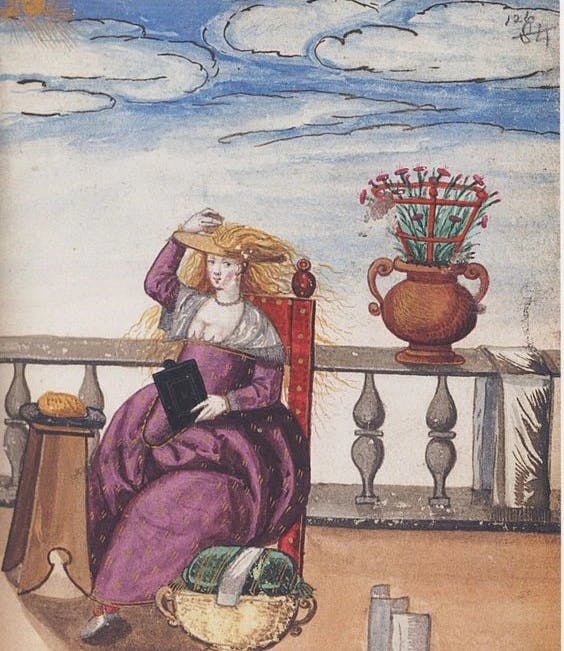
A Venetian courtesan bleaching her hair in the sun.
Unfortunately, these bleaching processes were by no means perfect and often led to some rather unusual shades of hair color, ranging anywhere from platinum blonde to a carrot-top red. Additionally, the bleaching process often severely damaged the hair, leaving it dry, brittle, and prone to easy breakage.
Putting Poison Directly into Your Eyes Was a Thing
Using belladonna as a beauty enhancement was an incredibly popular beauty hack during Renaissance Italy. By its name, belladonna doesn’t sound like a bad thing. It’s a pleasant-sounding word that means “beautiful woman,” which further adds a certain kind of luscious beauty.
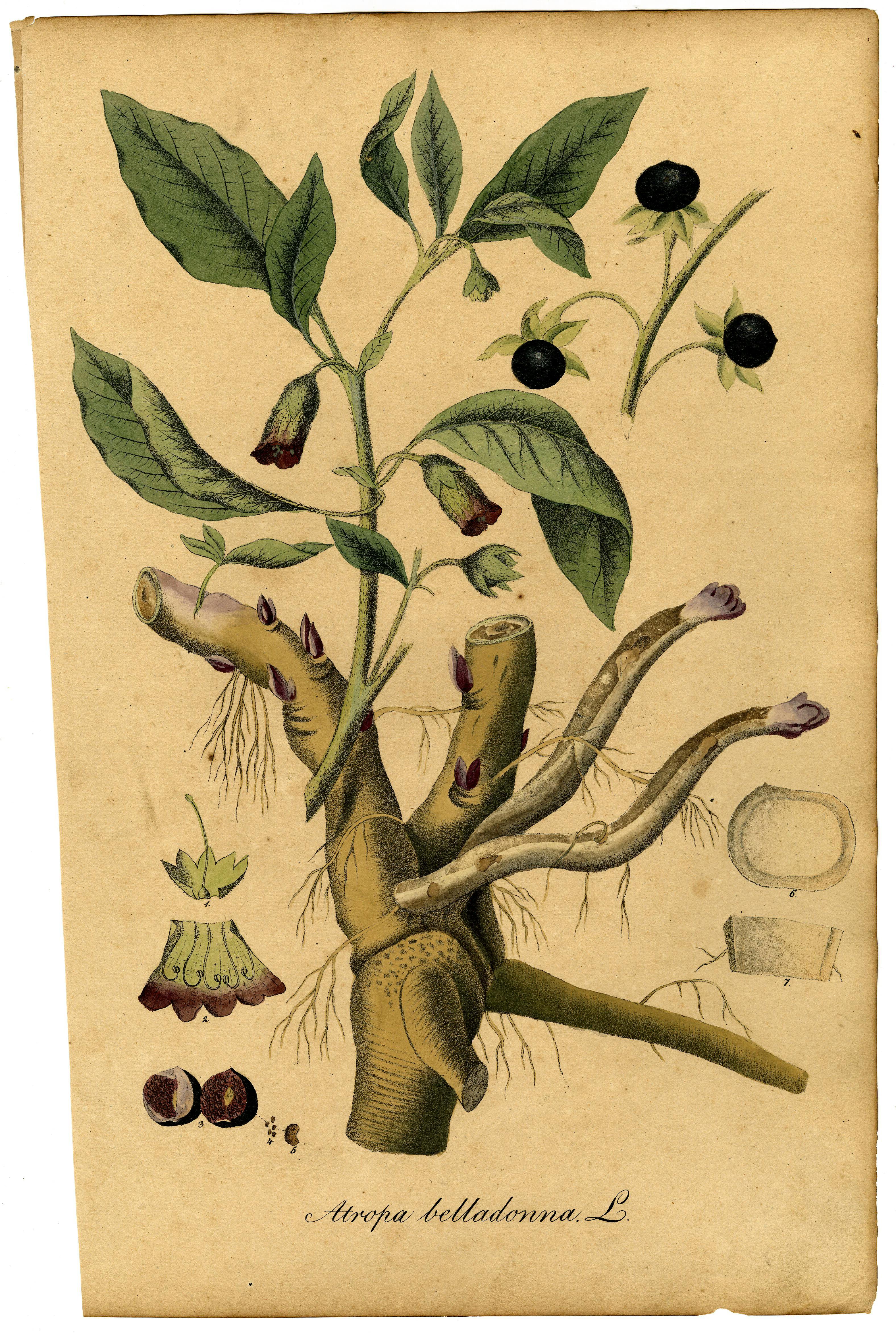
Nightshade berries, via Wikimedia Commons.
Made from an extract of nightshade berries, also called Atropa belladonna, the resulting eyedrops dilate the pupils, providing a soft and seductive effect, just like in a romance scene of a novel, when someone’s eyes “darken with desire.” In Renaissance Italy, this dusky, lustrous appearance of a lady’s eyes was considered the height of beauty.
However, Atropa belladonna is quite a powerful compound. The ratio of atropine to water for the belladonna drops shows how strong it is: only 1 part atropine is necessary per 130,000 parts water to dilate the pupils. This means that only one drop per eye would block receptors in the muscles of the eye that constrict pupil size.
And, as you might suspect by now, this comes at an immediate cost to vision, resulting in blurriness and the inability to focus on close objects. Though this would wear off over time, prolonged use of belladonna could cause permanent vision distortion or blindness. It also carried the side effect of increased heart rate because, let’s not forget, this tincture was made with poison.
Prolonged use of belladonna could cause permanent vision distortion or blindness.
Lastly, belladonna is considered one of the most dangerous herbal poisons because all parts of the plant are toxic. The oral overdose for belladonna is only 600 milligrams, and ingesting any part of the plant will have poisonous, possibly deadly, effects.
And while you’re probably thinking that the woman during Renaissance Italy were total nutjobs for doing this to themselves, you should know that belladonna is actually still used today. It’s an ingredient in some kinds of eye drops, particularly the ones used to dilate the pupil during an eye exam. Chances are, you’ve been exposed to belladonna before, but fortunately in a very small amount and in controlled circumstances.
Hairstyles That Exposed the Forehead Were High Fashion
The savvy Renaissance beauty was particular about her hair. The upper-class sophisticate sought a high hairline since a wide and high forehead was an essential trait of beauty during this era.
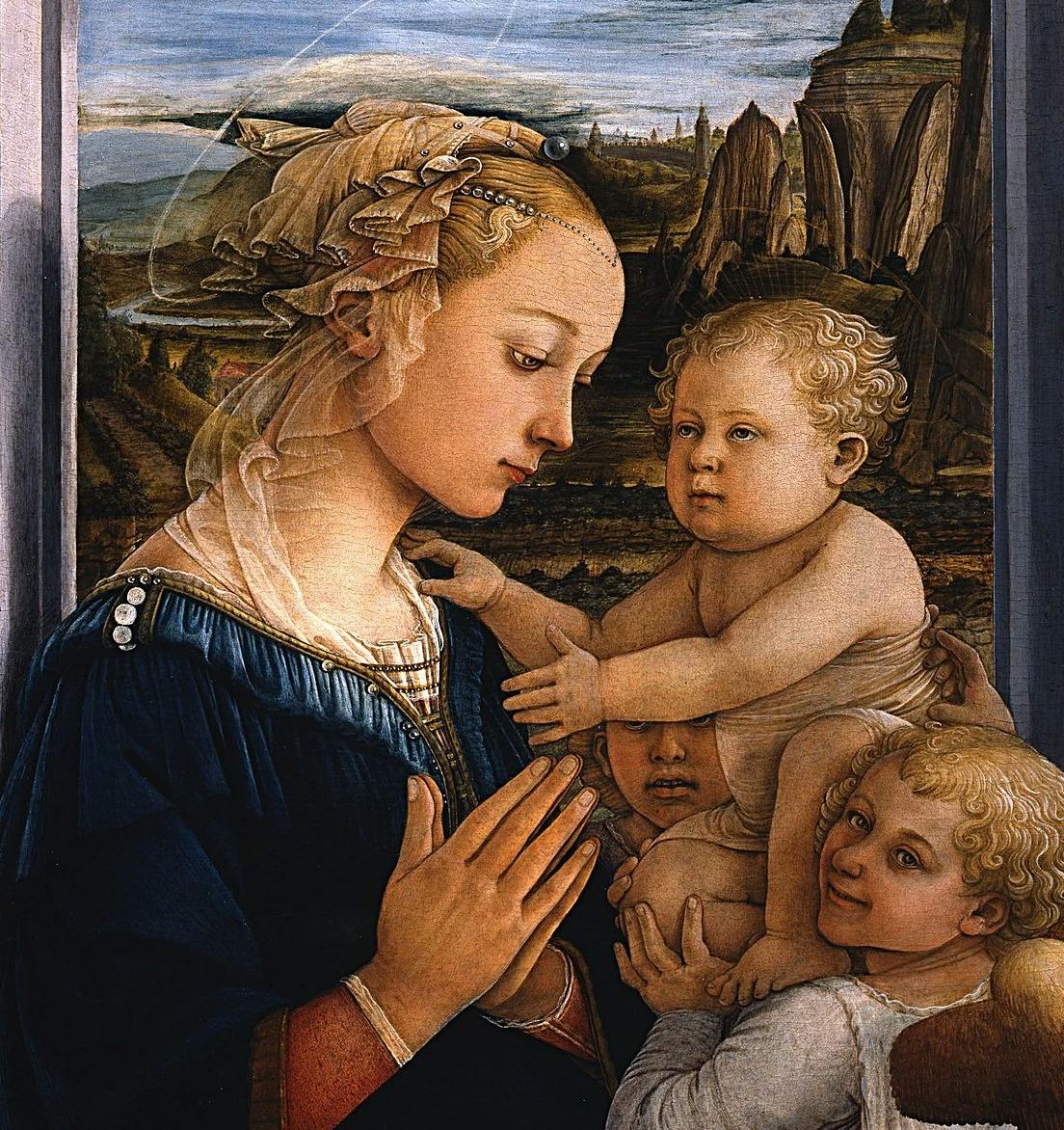
Madonna with child and two Angels by Fillipo Lippi, 1465. Via Wikimedia Commons.
Many women who weren’t graced with a naturally high forehead plucked their hairlines to get the desired effect. Other women opted to hide their hairlines under jeweled turbans or caps, which were also popular at the time. Under their head covering, most Renaissance women pulled their hair back tight against the skin and braided it, often in very elaborate designs.
Some popular hairstyles during Renaissance Italy included an intricate braided updo, half-up braided bun, ultra-long plaits, triple-braided buns, wavy half-up hair, crown braid, rolled updo, and intricate ponytails.
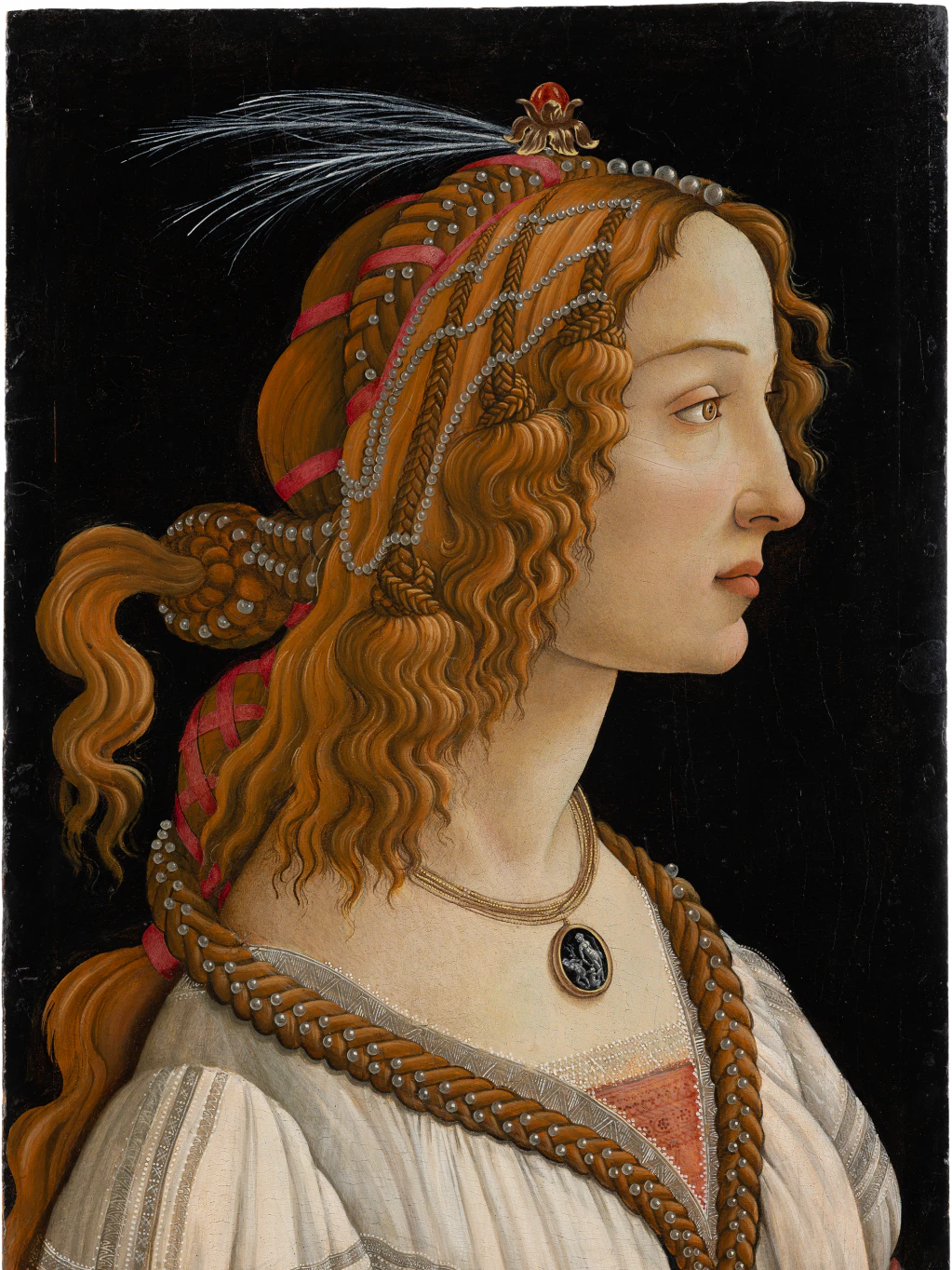
Idealized Portrait of a Lady (Portrait of Simonetta Vespucci as Nymph) by Sandro Botticelli, circa 1480. Via Wikimedia Commons.
High-status Renaissance ladies would always decorate their hair with precious jewels, pearls, ribbons, and hair combs. Additionally, and depending on the occasion, Renaissance ladies also liked to wear elaborate headdresses as this swept-back style allowed them to expose their foreheads. A few even opted for shimmering veils atop the high, peaked hats that were so popular at the time.
Rounded Body and Full Hips Were a Symbol of Good Health
As the complete opposite of Victorian body standards, ladies of the Renaissance period didn’t concern themselves with a few extra pounds as beauty meant a rounder, voluptuous body, full hips, and large breasts.
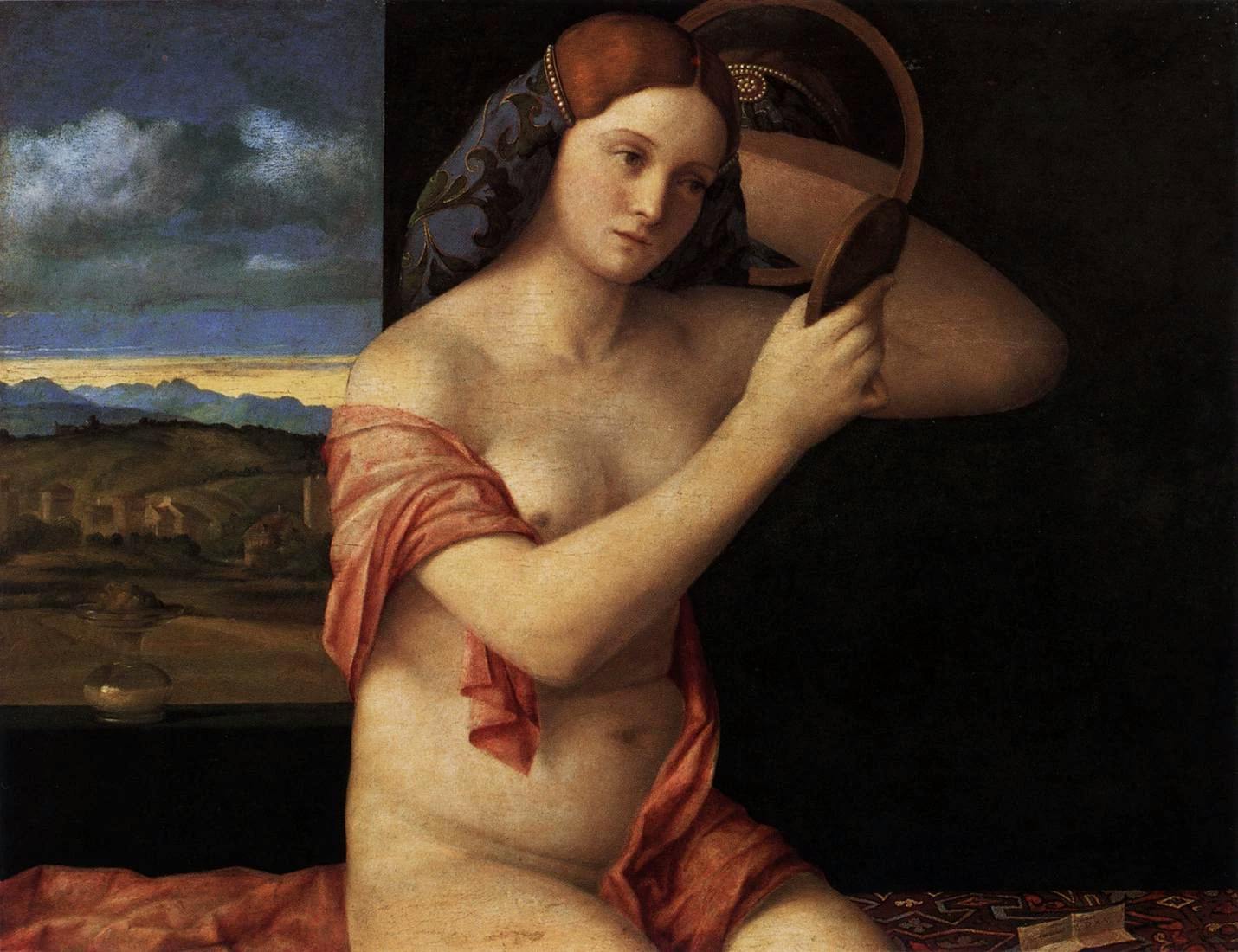
Naked Young Woman in Front of the Mirror by Giovanni Bellini, 1515. Via Wikimedia Commons.
Paintings from the Renaissance period often focused on women who would today be considered chubby or fat. However, at that time, their figures and forms were considered the height of sexiness and desire.
This is a stark contrast to modern attitudes, and it's quite impressive that natural women were prized and desired for their God-given bodies during the Renaissance period.
The Renaissance period was a time that definitely made women want to try some wild and dangerous beauty hacks to achieve the era's beauty standards. Which one did you find the most bizarre?